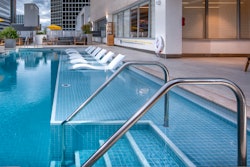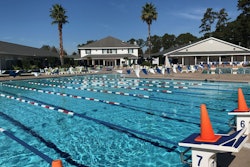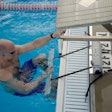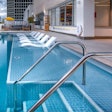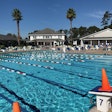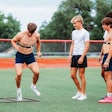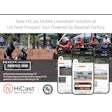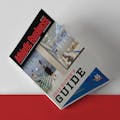SOURCE: National Athletic Trainers' Association (NATA)
DALLAS, TX – The Journal of Athletic Training, the National Athletic Trainers’ Association’s (NATA) scientific publication, released today A Comparison of Emergency Preparedness Between High School Coaches and Club Sport Coaches and Exploring Coaches’ Perceptions of Youth Sport Specialization: A Comparison of High School and Club Sport Context as part of their special thematic issue focused on youth sport specialization.
Key Findings
- High school coaches reported greater levels of emergency preparedness and training than club sport coaches.1
- High school coaches were more aware of emergency action plans (EAP) for their practice and competition venues and were more likely to have an Automated External Defibrillator (AED) available at practices, athletic trainers (ATs) providing immediate medical care at practices and competitions and be required to have CPR, AED and first-aid training than club sport coaches.2
- Club sport coaches are more likely to possess attitudes in favor of sport specialization as they associate it with a more elite-striving, professionalized atmosphere.3
- Coaches’ background characteristics did not predict their perceptions of specialization, suggesting that the competitive context itself (high school versus club) may be the most important influencer of these perceptions.4
- High school coaches of male teams rated specialization slightly more positively than coaches of female teams, whereas club sport coaches of female teams rated specialization more positively than coaches of male teams.5
“More than 4 million youth athletes who want to gain a perceived advantage for college scholarships and potential to participate at elite levels such as professional sports, are increasingly turning to year-round, pay-to-play options, such as club sports,” said lead author of the study and Assistant Professor at San Diego State University, Eric G. Post, PhD, ATC. “With athletic participation of any kind, health and emergency readiness should be non-negotiable. While club sport coaches may seem ready to prepare athletes for the ‘big leagues’, they may not be prepared to properly handle an emergency and often don’t employ a medical professional such as an athletic trainer to ensure athlete safety.”
“Overall, high school sports are more typically aligned with the tenets of educational athletics, which aim to focus on holistic athletic growth over elite talent development,” said lead author Justin S. DiSanti, PhD. “Club sports, on the other hand, often involve a more commercial pay-to-play system, and these highly competitive levels may lead to a de-emphasis on the individual’s long-term holistic development and health in favor of the more immediate pursuit and achievement of elite sports status.”
For both studies, 769 coaches of high school teams and club teams with high school-aged athletes in three sports (basketball, soccer and volleyball) completed an anonymous electronic questionnaire regarding their emergency preparedness, awareness of medical coverage pertaining to their team and perceptions of youth sport specialization. Emails were distributed to high school coaches through the Michigan High School Athletic Association and to club coaches via email addresses gathered from club sport organizations in Illinois, Michigan, Minnesota, and Wisconsin.
About NATA: National Athletic Trainers’ Association (NATA) – Health Care for Life & Sport
Athletic trainers are health care professionals who specialize in the prevention, diagnosis, treatment, and rehabilitation of injuries and sport-related illnesses. They prevent and treat chronic musculoskeletal injuries from sports, physical and occupational activity, and provide immediate care for acute injuries. Athletic trainers offer a continuum of care that is unparalleled in health care. The National Athletic Trainers' Association represents and supports 45,000 members of the athletic training profession. For more information, visit www.nata.org.
References:
- Eric G. Post, Daniel A. Schaefer, Kevin M. Biese, Lisa A. Cadmus-Bertram, Andrew M. Watson, Timothy A. McGuine, M. Alison Brooks, David R. Bell (2019) A Comparison of Emergency Preparedness Between High School Coaches and Club Sport Coaches. Journal of Athletic Training: October 2019, Vol. 54, No.10, pp. 1074–1082.
- Eric G. Post, Daniel A. Schaefer, Kevin M. Biese, Lisa A. Cadmus-Bertram, Andrew M. Watson, Timothy A. McGuine, M. Alison Brooks, David R. Bell (2019) A Comparison of Emergency Preparedness Between High School Coaches and Club Sport Coaches. Journal of Athletic Training: October 2019, Vol. 54, No.10, pp. 1074–1082.
- Justin S. DiSanti, Eric G. Post, David R. Bell, Daniel A. Schaefer, M. Alison Brooks, Timothy A. McGuine, Karl Erickson (2019) Exploring Coaches’ Perceptions of Youth Sport Specialization: A Comparison of High School and Club Sport Contexts. Journal of Athletic Training: October 2019, Vol. 54, No.10, pp 1055–1060.
- Justin S. DiSanti, Eric G. Post, David R. Bell, Daniel A. Schaefer, M. Alison Brooks, Timothy A. McGuine, Karl Erickson (2019) Exploring Coaches’ Perceptions of Youth Sport Specialization: A Comparison of High School and Club Sport Contexts. Journal of Athletic Training: October 2019, Vol. 54, No.10, pp 1055–1060.
- Justin S. DiSanti, Eric G. Post, David R. Bell, Daniel A. Schaefer, M. Alison Brooks, Timothy A. McGuine, Karl Erickson (2019) Exploring Coaches’ Perceptions of Youth Sport Specialization: A Comparison of High School and Club Sport Contexts. Journal of Athletic Training: October 2019, Vol. 54, No.10, pp 1055–1060.

















